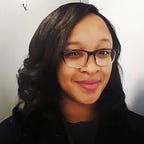A year at CUNY J-School as a Social Journalist: What I Did & What I Learned
When I applied to CUNY J-School in the Fall of 2016, I was enamored by their Social Journalism program. I had taken a few years away from the industry but knew that, at this phase in my life, I wanted to make a comeback.
I obtained my first Master’s Degree from another CUNY school, John Jay College of Criminal Justice, and felt that this would be a perfect way for me to bring together my passions social justice and storytelling.
However, social journalism is two fold: using journalism as a tool for empathy and advocacy but also adapting journalism for social media. While in this program, we had to choose a community. If you’ve read my posts before, you know that this community is the formerly incarcerated, specifically formerly incarcerated women.
Here, I’ll tell you what I’ve been up to for a year and the work I’ve done with community.
How I Listened
Throughout this past year, I’ve connected with advocates and criminal justice influencers via social media, in person at conferences, and through mutual connections. I was able to interview formerly incarcerated women for original reporting pieces. Most of my sources I interviewed more than once and had continual contact. For my database project, I conducted an online survey and in person focus groups at Exodus Transitional Community.
What I Did
Medium Publication
Valiance is a Medium publication I created with10 original reporting pieces. All of the stories consist of first-hand accounts from formerly incarcerated people, mostly women.
Multimedia projects
I created three multimedia projects, implementing skills learned throughout the program, including:
A social video about a formerly incarcerated woman who is creating and providing housing for other formerly incarcerated women in the Bronx.
An audio report featuring two formerly incarcerated people who are now advocates of criminal justice reform.
I also designed and created an infographic about the unique challenges women face while incarcerated. This was posted as a follow up, and also stand alone piece for Valiance.
Facebook Community
I created an active Facebook community for formerly incarcerated people. It has 53 likes and is still growing.
Events and Conferences
I attended several events and conferences where I met members of my community in person and via social media. It was good to see some of the same faces at several of these events and some who recognized me.
At the Re-Thinking Re-entry conference, I met Kathleen Bernier of Exodus Transitional Community who will be hosting me to conduct a focus group and survey about my On Your Own Re-entry project.
As the communication intern for John Jay’s Prisoner Reentry Institute, I live tweeted a program sponsored by one of their fellowship funders. It was called the Pinkerton Symposium on Credible Messengers. This approach to criminal justice is very similar to social journalism in that it employs justice involved people and community members as mentors to at risk youth.
After my published piece about Topeka Sam and Hope House, I was invited to attend the official opening celebration. Susan Burton, seen in this photo speaking, was Sam’s inspiration and mentor as she developed Hope House. Burton has a re-entry program that also provides housing for formerly incarcerated women in Los Angeles.
Catalog project
Throughout my interviews, I spoke with formerly incarcerated people about the difficulty with locating reentry programs and housing in New York City. There are many resources for formerly incarcerated people that meet many different needs, but there is not one central location to find them.
I am developing an online database to create a hub to find these resources. Read more about my plan here and view my design prototype here.
What I Learned
My community is a sensitive one, but they are definitely in the spotlight. My challenge was finding people who have already been reported on by multiple large outlets. However, when I was able to find lesser known subjects it was a hassle to get access to them or even get them to talk without wanting to be compensated for their time and stories. This is something I can’t ethically do as a journalist.
One piece of advice I wish I gave myself in January is not only focus on direct members of your community. While I know the importance of getting the voice of my community, knowing stakeholders gave me a sense of trustworthiness.
The most critical insights I learned throughout this year were things that I learned through community engagement course. The best way to engage in my community is through gaining trust and providing empathy. I gained trust through building relationships with stakeholders, being visible in the community.
